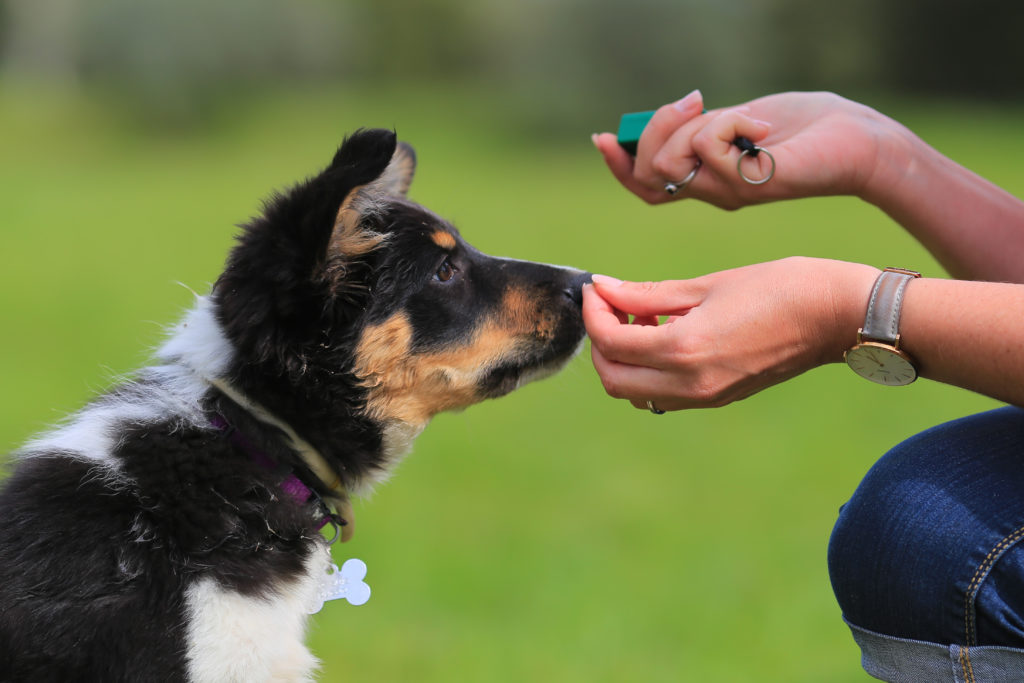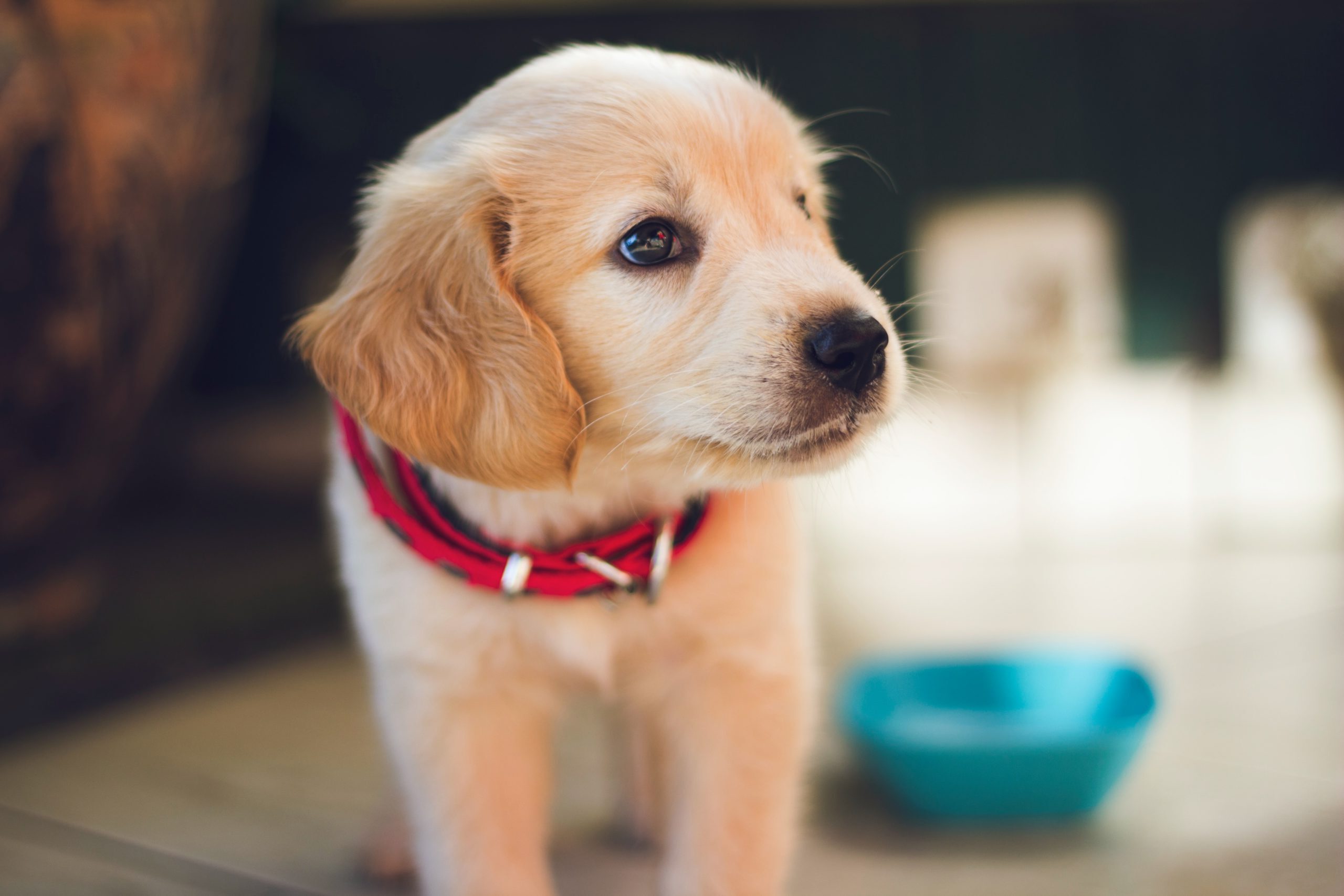Crate training your puppy can be a really useful skill to master for a number of reasons! It helps them learn to enjoy how to spend time alone. It means you can keep them properly supervised if you need to. And, the crate can become a ‘safe haven’ for your pup, helping them become more comfortable in your home. But, how do you crate train your puppy? We’ve put together some useful advice and answers to some of the most common questions we’re asked about crate training!
Where to put the crate?
The most important thing is to make the dog comfortable in the crate and to be able to rest in it. It is not a good idea to put it in the hallway, narrow passage and in other places where many people pass by often. But, placing a crate in a room where no one is looking is also a bad idea. Puppy wants to feel like a part of the family and at least occasionally see their human! Also, do not place the crate near radiators, refrigerators, or other electrical devices. It should be remembered that the dogs have much better hearing than us and they hear various types of squeaks and sounds issued by devices, even if they are set to “stand by”.
When you’ve bought the crate and found a good place for it, let’s make it a comfortable den. You need a bowl with water, toys and even a piece of clothing with your smell in there! In other words, let’s do everything to make the crate a comfortable home for our dog. Dogs feel safe in tight dens. To make the pooch feel safer in the crate, you can cover it with a blanket so that only the entrance is uncovered. This means that the pooch will not have to watch what is happening around and it will be easier to settle.
How to start getting your dog used to the crate?
At the beginning of the process of getting the dog accustomed to the crate, simply open the door and let the dog familiarize itself with the new piece of furniture at home. Each attempt to approach the crate, smell it, or go inside can be rewarded with praise or a treat. There are dogs that immediately run into the crate. But, there are also more withdrawn ones that will need more time to get used to the presence of the crate.
Do not force the dog to enter the crate. To facilitate this process, all their meals can be served inside a crate. You can gently close the door when the dog eats and open the doors as soon as they finish the meal. In this way, you build an association in the dog’s head – when the crate is closed the bowl is full, when the crate opens the bowl is empty and pleasure ends. We also give teethers, toys, kongs, and the like in a crate.
When the dog is happy with being in the crate, we can start teaching it how to enter the crate on the command. First, we guide it with a treat. When all four paws are in the crate, we spread the treats on the bed. It is good to teach a dog that in this case, the crate is the source of the reward, not our hand.
After a few repetitions, you can begin to guide the dog with an empty hand. We do it exactly the same as before. Only this time we don’t keep the treats in the hand we use to guide the dog. If the pooch enters the crate, of course, we pull out treats from the sachet and scatter them on the bed. When the dog willingly enters the crate at the mere gesture of the hand, we can add a verbal command, e.g. “in place” or “bed”. We issue the command “in place” or “bed”, guide the dog to the crate, and reward.
To teach the dog how to get out of the crate peacefully, we open the door. As soon as the dog tries to squeeze through, we close it again. After several unsuccessful attempts, the dog will understand that it will not be possible to get out of the crate by pushing. When the pooch gives up and politely stays in the crate with the door open, we give the command e.g. “ok” and with a gesture, we delicacy encourage them to leave the crate.

Treats help when crate training your puppy!
How to get your dog to stay alone in a locked crate?
If the dog willingly enters the crate, you can also start to get used to it when the door is closed. First, we close it only for a few seconds and reward the dog for staying inside and calm behaviour. With time, this can be extended to a dozen or so seconds then a few minutes, and so on. You can use the moments when the dog is tired. For example, after a long walk, or intense play with another dog. Then, close the door when it falls asleep in the crate.
At this stage of learning, we should stay in sight of the dog. Only when the dog happily stays in the locked crate for a long time when it can see us, can we start to disappear from its sight. In the beginning, we can leave the room for a few seconds. Later, we can start going to the kitchen, for example, to make tea. You can try to go outside the house and after a while go back to the dog. All to teach the dog that our going out and coming back is completely normal. There is nothing to be worried about!
As you progress in training, you can leave your dog alone for several minutes, half an hour, and ultimately even for several hours. Several hours doesn’t mean 8 or 10, rather 2-4, and for a puppy 1-2h. Dogs have their own natural needs and it is our duty to provide them. If you work after hours or come home late, consider employing a pet sitter or a friendly neighbour. They can walk the dog and spend some time with them. Another solution may be to leave the pet for a few hours in a daycare for dogs. Here, it will find professional care, the company of other dogs, and lots of fun.
What to do if the dog starts to bark in the crate? How long does the process of getting the dog used to the crate last?
If the dog is left in the crate and begins to squeak, scratch, bark, etc. the worst thing you can do is release it. This will only teach it that with its loud behaviour it gets the door open. If the puppy starts protesting in the crate, wait until it calms down and then release it. However, this hysteria is a signal that maybe we have skipped some stage of the training. Then, we need to go back to the previous stage. Perhaps the whole process will have to be divided into even smaller and easier stages for our dog?
Each dog is different, has different predispositions, different psyche and different baggage of experience. Therefore, there is not a good answer to the question of how long your crate training will last. Some dogs will be happy to stay alone in the crate after a week of training. Others will need much more time. However, it is good to devote this time at the beginning of crate training, to later avoid separation problems, destruction of the home, etc. A well-introduced crate can be a great tool and help in many everyday situations with the dog. Wherever you go with your dog, it will have its safe home with him.
At Royvon, we’re passionate about helping as many dog owners as possible enjoy their puppies and show them that shaping a well-trained pup doesn’t have to be difficult! Making small training changes can lead to surprisingly big results. So, we offer a variety of options to help you on your training journey. Over Covid-19, this includes personalised, 1-2-1 online sessions. If you’d like assistance with your personal circumstances, please set up an online training session with us today. We’d love to hear from you!




Leave A Comment